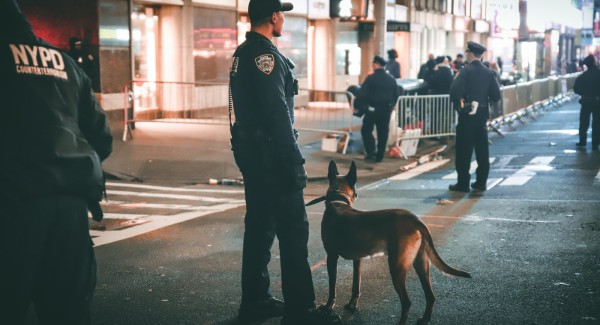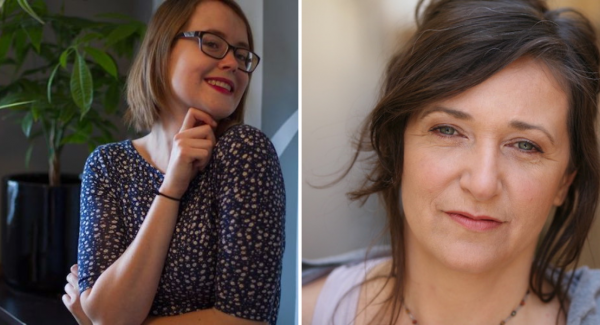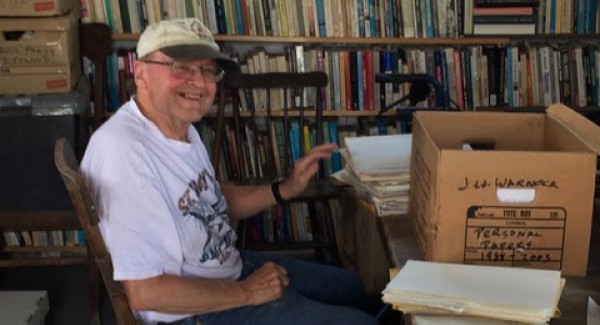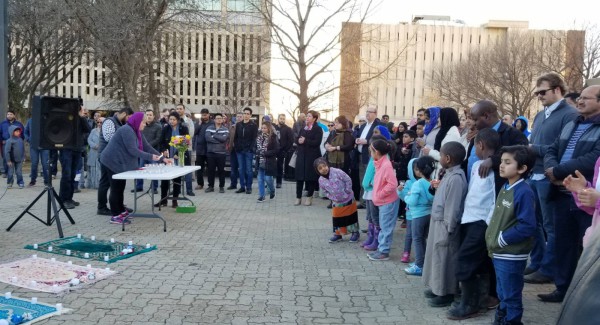Roundtable on reopening Saskatchewan schools
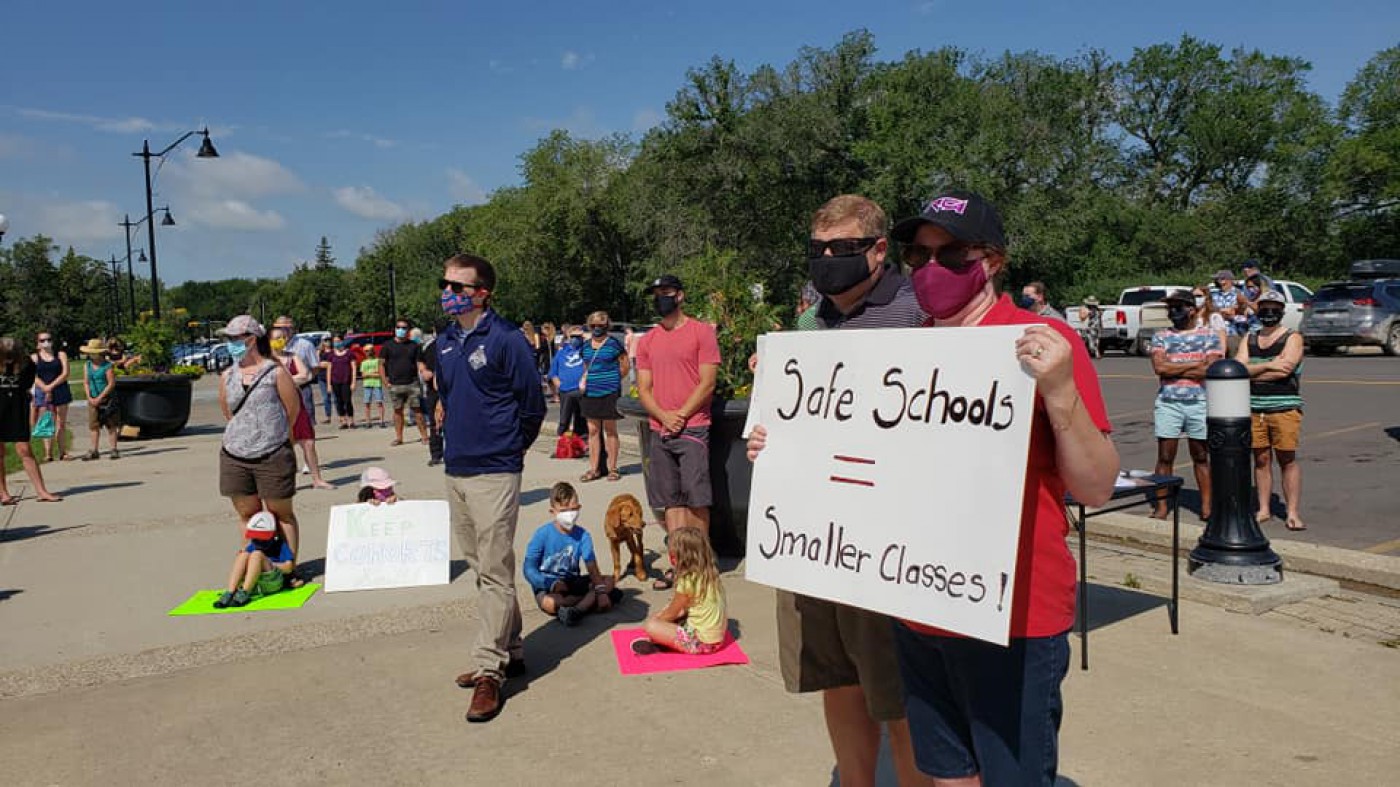
NDP education critic Carla Beck has called Saskatchewan’s plan to reopen schools during the COVID-19 pandemic “the worst plan in the country.” She’s not alone in her assessment.
Across the province, parents and students have been speaking out in fear, anger, and dismay over the Sask Party’s lax plan to resume in-person classes in September. And a July survey by the Saskatchewan Teachers’ Federation shows most teachers are not confident schools can reopen safely in the fall.
Under the Sask Party’s plan, there are four levels of precaution. Although the province has delayed the start of the school year until September 8, their guidance on what level of precaution schools should take when classes resume has been murky, putting the onus on school divisions to decide whether to mandate masks (a Level 2 precaution) or go back at Level 1, meaning “as close to normal as possible, with additional health measures and precautions.”
But until school districts reach Level 3, the plan doesn’t include the proactive measure that many say would make the biggest difference in reducing the spread of the virus: smaller class sizes.
Last week, under pressure from groups like the Saskatchewan College of Family Physicians, the Sask Party finally announced mandatory masks in schools at Level 2 – but only for students in grades 4-12 in high-traffic areas like buses and hallways.
A better, safer, more humane reopening plan is possible – one that puts the health of students, teachers, and parents first. The Sask Dispatch invited one teacher (who requested to be anonymous, out of fear of losing his job), one student, and two parents, all based in Regina, to a round-table discussion about their fears and plans for the fall.
Julian Wotherspoon: I am a fourth-year health studies student at the University of Regina and single mother to two children in Grades 2 and 5 in the public school system.
Kale MacLellan: I’m a Cree, Saulteaux, St'at'imc and Scottish mother to a brilliant 7-year-old boy. Current university student, lover of justice and tea.
Teacher A: I am a teacher in the public school system. I believe the purpose of public schools ought to be more than just curriculum. Schools should engage boldly in the public sphere and embody a social/political mission to increase the power of the oppressed. Public schools have been under steady attack for many years, with the Sask Party cutting budgets, using P3s for infrastructure, and increasing class sizes. The Sask Party uses the collective bargaining process to fight hard against the interests of teachers and students to undermine public schools, and they are using the pandemic to score big wins in their ongoing anti-school agenda.
Cori Bowman: I am a Grade 12 student in the French Immersion program in Regina. I also have a younger sibling entering Grade 6 in French Immersion as well.
What do you think of the Sask Party’s plan to reopen schools? What are you afraid of?
JW I think the word “plan” is a very generous description of what the Sask Party government has offered to school divisions and families. As we come into the sixth month of COVID in Canada, I think people are reaching a level of COVID fatigue that is very understandable, but as more people take more risks and come in contact with more people in the community we are seeing a rise in transmissions. My biggest fear is that families – and particularly youth – will think that “as normal as possible” means there’s no longer anything to worry about, even though we have more active cases now than we did when we were in lockdown in March and April.
I also worry about what will happen without adequate transmission prevention in schools when working families are forced to isolate, wait for testing, and/or when we see spikes in community transmission that trigger a return to remote learning. The situation in March was untenable. Working from home, or facing unemployment or loss of income under high stress and anxiety while trying to teach from the supplemental materials that were sent home was next to impossible. The current lack of a plan will force us all back into that situation, only this time they’re telling us that our children’s participation in remote learning will be mandatory and there’s no word if paid leave or emergency funding will be made available or extended to support that.
KM I don't think we can honestly call this a plan. It seems like the Sask Party hoped the pandemic would have blown over by now and life would go back to pre-COVID times. The school year looks exactly the same as last year, with the suggestion of older grades maybe wearing masks. There has been no guidance, no leadership, and no accountability from the government.
TA In early 2020 Saskatchewan teachers returned a 95 per cent vote in favour of strike action. One of our main bargaining demands was a pay increase, but above that on our priority list was the demand that we include limits on class size and classroom composition in our collective bargaining agreement. We proved that our top priority was class size and composition limits when we rejected a contract offer from the government that included a pay increase, because the Sask Party refused to put class size limits on the bargaining table. Teachers rejected money in order to fight for better learning conditions for kids. The Sask Party wouldn’t budge and we were in the middle of escalating our strike actions (and winning over public opinion to the fact that teachers were striking for the sake of the kids) when the global pandemic changed the political calculation. Our union leadership decided in the context of the pandemic to accept a contract without class size limits.
The Sask Party perceives that their strongest base of electoral support is rural, living in small towns where crowded classrooms are not a big problem. The Sask Party perceives that one of their main roads to re-election in October is to “reopen the economy” and get back to normal as quickly and carelessly as possible. The Sask Party also perceives that a big obstacle in their ongoing anti-public-school agenda is the willingness of rank-and-file teachers to engage in collective strike action, as was demonstrated by this round of bargaining, which the Sask Party escaped by the skin of their teeth.
My biggest fear is that families – and particularly youth – will think that “as normal as possible” means there’s no longer anything to worry about, even though we have more active cases now than we did when we were in lockdown in March and April.
So what I think of the Sask Party’s school reopening plan is: it’s a continuation of their anti-school agenda. They are attempting to force schools to reopen, so they can deliver their promise to “reopen the economy”. But they’re trying to do so without providing any additional funding, so as to not interrupt their long-term budget-reduction trajectory. They are trying to do so in a way that shows they can push teachers around; that teachers are powerless. They are trying to do so in a way that undermines teacher solidarity: pitting rural teachers with small class sizes who don’t want to add stress to the parents in their community against urban teachers with bursting classrooms who will be put in serious danger by this reopen “plan.” Last, the Sask Party is fiercely committed (especially after our last round of bargaining) to never funding any reduction to the student-to-teacher ratio in public schools, pandemic or no. They refuse to provide funding because doing so would show that where there’s a political will, there’s a way: the funding can be found to provide decent class sizes and the supports students need. If they allow smaller class sizes now, it would morph into a long-term win for public schools, and they won’t tolerate that.
What I’m afraid of is that under the current reopening plan, people will get sick and die. The plan doesn’t allow teachers and students to avoid the 3 Cs (crowding, close contact, and closed spaces). The World Health Organization and the Centers for Disease Control and Prevention both believe that avoiding the 3 Cs is the best way to open schools without worsening the COVID outbreak. Under the Sask Party plan, teachers will get sick in the line of duty. Substitute teachers will be called in, forced to choose between putting themselves in harm’s way or going without a paycheque. Students will get sick and transmit the virus to their families, including high-risk elders. Everyone else will get sick because an outbreak in any one school will spread. Another thing I’m afraid of is that teachers will feel they have no choice but to do as they’re told, obey marching orders, and return to work in unsafe conditions. It’s been set up this way because the Sask Party has refused to provide the funding that the school boards could use to reduce our class sizes and avoid the other two Cs. I’m afraid that teachers, feeling they have no other option, will roll up their sleeves and try to ignore the unsafe conditions in their workplace. I’m afraid this will result in a crisis two, four, or six weeks into the school year.
If they allow smaller class sizes now, it would morph into a long-term win for public schools, and they won’t tolerate that.
CB I am deeply unimpressed by the government’s reopening plan. It is completely irresponsible, and places those most vulnerable to infection and complications at an even higher risk than they already are. The families that are least able to keep their children home are those where the families are already working out of the house. This means these families will be forced to have more people in their household out and exposed to further chances of infection. The families most likely to suffer under this plan are working-class families who have to work in-person in places like stores, restaurants, and warehouses. It is a much more comfortable plan for the wealthier families who are already working from home and have better access to homeschooling resources should they wish to reduce the risk for their children.
I go to school with more than 1,400 students. We are currently unable to gather in public with more than 30 people, and yet 1,400 students attending my school is fine? Why have students been deemed exempt from these rules? We are not immune to infection. We are still people who are infectable and should stay home if possible.
In your opinion, what political/economic/social pressures or assumptions have shaped their plan?
JW I’ve been thinking a lot about the timing of all this and all I can say here is that I find it extremely interesting that the Sask Party was more than happy to respond quickly and strongly to the COVID 19 pandemic when it meant shutting down schools on the eve of a teacher’s strike…but now that our teachers have signed a contract with no reduction in class sizes and less paid time to prepare our classrooms for this unprecedented year, the Sask Party cannot be bothered to consider the consequences this could have for the lives of Saskatchewan families.
I don’t think they’ve ever actually cared. They want free markets and little else. They want us to take responsibility for our health as individuals, they want us to take responsibility for education as individuals, because it absolves them of their responsibility for public health and public education while undermining our capacity for collective action.
I go to school with more than 1,400 students. We are currently unable to gather in public with more than 30 people, and yet 1,400 students attending my school is fine? Why have students been deemed exempt from these rules? We are not immune to infection. We are still people who are infectable and should stay home if possible.
KM Since the beginning of the pandemic people have said that the marginalized would be disproportionately affected. This has been proven true repeatedly in the last five months. Like almost all critical services in Saskatchewan, instead of strengthening our public school system with increased funding and overdue upgrades to our aging schools, the Sask Party has provided the bare minimum and placed all liability on school districts.
Politicians have forced parents to choose between an education or the safety and health of their kids. Some people’s solution is simply keeping their kid home, but not everyone can do that. What about parents who cannot afford to stay home and homeschool? How will parents access materials needed to homeschool? Sure, there are grants available but parents are forced to pay up front for supplies and apply to be reimbursed later. For refugees or newcomers who aren't familiar with navigating the government system, how will they know the options available to them, especially if language and cultural barriers stand in the way? If parents decide to send their kids back to school, how will families be supported when students are forced to stay home when they inevitably develop a runny nose or cough? Will we see an increase in social services involvement for families who have to stay home? How will truancy laws come into play? How will this affect the disproportionate number of Indigenous children in provincial care?
Another option suggested is sending your kids to a private school. Not everyone can afford to send their children to private schools where tuition averages $5,000 a year, per child. Private schools have the advantage of limiting class sizes and enforcing extra safety measures, but this again lets the Sask Party off the hook for our public education that we pay for. The answer to this problem isn't privatization – our long term care homes have made that extremely clear.
To be clear, there is no shame in choosing either of these options if they work for your family. But for the low income, working class, Indigenous, and newcomer families, these options likely won't work and these already disadvantaged communities will be hit the hardest the minute COVID enters a school. It isn't fair to place this upon their already burdened shoulders.
Instead we need to essentially reimagine education and the workday as we know it. We need less time in offices and working spaces and more time at home where we are safe. We deserve better.
Will we see an increase in social services involvement for families who have to stay home? How will truancy laws come into play? How will this affect the disproportionate number of Indigenous children in provincial care?
TA Parents are stressed out and worn down by the pandemic. They’re burning the candle at both ends trying to keep up with the demands of their jobs while providing full-time childcare for their kids. Our economy is not set up to materially support people during a pandemic if they can’t perform work due to the demands of social reproduction labour. So parents are doing their best to juggle and they’re exhausted. The Sask Party is exploiting this fatigue by positioning themselves as the party that will get kids back in schools full-time, giving parents the relief they’re desperate for. The irony is, I agree that parents and students are entitled to in-person public schools. The problem is that, due to their budget-cutting agenda, the Sask Party is not willing to take the steps available to them to make public schools safe during this pandemic. As I mentioned, they’re trying not only to get parents back to work, but to score a blow against public schools and teachers’ collective solidarity in the process. If the Sask Party was really the party of reopening the economy, they would be willing to provide the resources to avoid the 3 Cs in schools so that parents could send kids to school (and return to work themselves) knowing their kids are safe.
What would your ideal back-to-school plan look like?
JW This plan is nothing like what I expect from a responsible and evidence-based reopening plan. A good plan to limit the spread of an infectious disease would begin at the highest possible level of precaution, and precautions would be eased as we know more about how the return to school will affect transmissions in our community. If we’re being generous, we could argue that March to June was the highest possible level of precaution and that it is time to relax our response…but by no means is back to “as normal as possible” reflective of what an ideal next step should include.
My ideal plan would include significantly reduced class sizes and cohorting as well as regular testing in schools to ensure that when (not if) cases of COVID-19 occur in our schools we have the capacity to limit the spread. This has been done in countries like Denmark and Netherlands with very little change to the rate of COVID transmission in communities. It would also include detailed and quantifiable measures and thresholds to help school boards determine when and how to transition from one phase of the province’s plan to the next. By offloading so many decisions onto the school divisions with so few guidelines, our province is asking K-12 educators, administrators, and school boards to act and make decisions like doctors and epidemiologists, which they are not trained to be and have never signed up to do.
KM The ideal back to school plan looks similar to the plans proposed by Chief Cadmus Delorme from Cowessess First Nation and Prairie Sky School in Regina. Ideally classroom sizes would be reduced significantly, with proper social distancing practices and updated ventilation systems. More classes would have the option to use outdoor classrooms and land-based learning, as well as reduced instruction time. I don't believe children are meant to stay in desks for hours at a time, just like I don't believe adults should be confined to the 40-hour work week, especially during a global pandemic.
The irony is, I agree that parents and students are entitled to in-person public schools. The problem is that, due to their budget-cutting agenda, the Sask Party is not willing to take the steps available to them to make public schools safe during this pandemic.
TA In the ideal school reopening plan the province would have clear, mandatory minimum standards for schools boards to adhere to. It would require classes of no more than 15, in properly ventilated rooms, with extra cleaning staff and cleaning protocols, with rules in place for hand-washing, masking, and no close conversations/contact. Teachers would be provided extra training to ensure we know how to properly implement these rules. Then each school board would find the best way to meet those conditions in their particular setting. In some cases, it might require renting extra space and hiring extra teachers and support staff, and reducing teachers’ instructional hours to allow time for cleaning, etc. In other settings it might not require these steps. For example, some rural schools might already have ample space for physically distanced classrooms. Each school board would submit a budget and the province would provide the money. Denmark’s plan is the model to follow. The ideal school reopening plan would also align with the hierarchy of controls from the CDC.
What will September look like for you, your family, and/or your classroom?
JW I have a lot of trouble thinking about September without panicking. My ex/co-parent and I simply cannot send our children into their classrooms with the current plan because of the health status of people in our household. But at the same time I am determined to finish my degree this year and I still need to work. We have a lot of flexibility and will be figuring out a way to keep our children at home until I am comfortable with the province’s ability to identify, respond to, and contain any outbreaks that could occur in schools. But I worry most about the people who don’t have that flexibility and have no choice but to send their children into the schools with or without appropriate measures.
While we’ve decided to keep our children home, I am heavily resistant to the idea of registering to homeschool or to sign up for remote learning. That would feel as though I am absolving the provincial government of their responsibility to provide my children and our community with safe and accessible public schools. It would feel like accepting a sort of privatization of my child’s education which helps no one. So we have been considering a school strike.
While we’ve decided to keep our children home, I am heavily resistant to the idea of registering to homeschool or to sign up for remote learning. That would feel as though I am absolving the provincial government of their responsibility to provide my children and our community with safe and accessible public schools.
KM Because the institution I am attending had already decided that all classes for the fall semester will be online, I will be staying home. My son will not attend school until I feel it is safe for him, his classmates and our family.
TA My own child has to go into daycare so I can go to work. That opens us up to vectors for infection from other kids and daycare workers, and vice versa. However, perhaps ironically, the daycare facility follows one of the most important protocols that the Sask Party refuses to follow for public schools: class sizes are small.
My classroom: we don’t have our class lists yet because the province has left it so late, provided such vague guidance, and refused to provide resources. So school boards haven’t known what we’ll be dealing with and are scrambling to get ready. Another factor adding to the chaos is parent uncertainty: because the Sask Party plan so obviously will not make schools safe, parents are very afraid and thousands of them province-wide are considering homeschooling or online private school options. I suspect school boards don’t know their final enrollment numbers yet because of this. That is the fault of the Sask Party: had they provided a safe reopening plan, parents would be more confident sending their kids to public school and we teachers could have more knowledge of the class sizes and conditions we’ll be walking into come September. Every step of the way, the Sask Party’s goal has been to add chaos and confusion, ultimately to undermine public schools, divide the people of this province, and exploit parents’ fear for the sake of their anti-public-school agenda.
From a physical space perspective: if my classroom has 22, 25, 28, or 30 students (any of which is likely), it will be impossible to maintain two metres distance between students. Under the teachers’ professional code of ethics I’m legally responsible for maintaining a safe learning environment. In September, if I’m unable to maintain two meters distance, I’ll have no choice but to shut down the classroom. But it’s not clear to me what legal mechanism I can trigger in order to do that. It’s not clear to me how I can live up to my ethics code as a teacher, without suffering discipline from my supervisor. Therefore, I’m extremely anxious about being between a rock and a hard place, I’m anxious about my own safety, the safety of my students, and I'm unsure what kind of steps will be available to me to insist on what’s right for my students in September.
From a curricular perspective, I don’t know what my instruction and assessment is going to look like. If we end up on a hybrid model (half the class comes to school on Monday, the other half on Tuesday), I will have to plan different educational experiences compared to a fully-online education model or a more “normal” model with all students in the classroom every day.
It’s not clear to me how I can live up to my ethics code as a teacher, without suffering discipline from my supervisor. Therefore, I’m extremely anxious about being between a rock and a hard place, I’m anxious about my own safety, the safety of my students, and I'm unsure what kind of steps will be available to me to insist on what’s right for my students in September.
How can people take collective action to oppose the Sask Party’s plan and/or keep each other safe as schools reopen?
JW I am really happy and impressed with the amount of organizing that folks have already been doing. There has been incremental progress that shows the Sask Party can be made to peddle back on these decisions through collective action. I want these actions to continue. Things like writing letters, organizing phoning blitzes, and being very public with our worry about what September has to bring.
But I think we can step it up. I think if all of us who have the capacity and are considering keeping our children at home in the fall were to keep our children registered in their current class rooms, but keep them home while collectively demanding better it could be really powerful. It would make sure that our children are still counted when decisions about space and staffing are being made, keeping resources in schools where they desperately need to be. And more importantly it would be a refusal to give up on the collective resource that is public education, instead of just opting out as individuals.
I’d also like to see more parents rallying to protect our teachers, not just our children. It’s easy for us, in moments of fear and anxiety, to focus in on ourselves and our families, but this plan is also putting teachers at risk. I want every parent who is upset and anxious about sending their kids to school in the fall to also throw their solidarity behind their kid’s teachers. I want teachers to be able to refuse going into unsafe classrooms just like I have the right to refuse unsafe work in my workplace, I want them to get hero pay, and more sick days should they need to isolate, and the resources and guidance they need to make decisions about classroom health and safety as this pandemic continues.
I want every parent who is upset and anxious about sending their kids to school in the fall to also throw their solidarity behind their kid’s teachers.
KM Pressure your representatives to demand more for our children and the people of Saskatchewan. Call, email, or write your MLA, Scott Moe, and Gord Wyant. If it is safe to do so, keep your children home until you are comfortable with their return. There is power in the collective.
TA The most important thing people can do is take direct action to insist on a clear plan that provides for safe, in-person public schools. My motto is this: students, parents, and teachers are entitled to safe, in-person public schools. We deserve that and we need that. We need it so students can benefit from in-person education with their peers and avoid the mental health consequences of isolation. We need it so parents can get back to work, know their kids are learning safely, and avoid the mental health consequences of exhaustion from juggling an impossible childcare/work situation. We need it so teachers can go to work without facing unusual risk of illness, which is our irrevocable labour right under Occupational Health and Safety (OHS) legislation.
Direct action means action that immediately and directly achieves our desired goals, as opposed to action that simply asks governments to solve the problem or waits for the next election cycle to choose different representatives in the hope they will solve the problem. So in this case direct action would be any action that immediately makes the schools safe or makes it so students and teachers don’t ever have to enter the unsafe schools. And yet, we can’t just walk away from public schools because they’re unsafe. I can’t just quit my job and parents shouldn’t be forced to just homeschool or purchase online private schooling. Instead, we need to refuse the unsafe conditions under the current plan, while still insisting/demanding/fighting for the government to fulfil our right to safe, in-person public schools.
Examples of indirect action are voting and writing complaint letters to your elected representatives, whereas examples of direct action are student strikes, sit-ins, teacher sick-outs, or teachers refusing to perform unsafe work en-masse. My opinion is that the most effective actions to make schools safe would be:
Parents and students enroll in public school, then organize a mass walk-out or ‘student strike’ with the effect of shutting down public schools until a safe plan is in place
Teachers, en masse, invoke OHS legislation to refuse unsafe work if protections from the 3 Cs are not in place in their schools, again having the effect of shutting down public schools until a safe plan is in place.
We need to emulate the approach of the Ontario teachers’ unions in their letter to their ministers.

